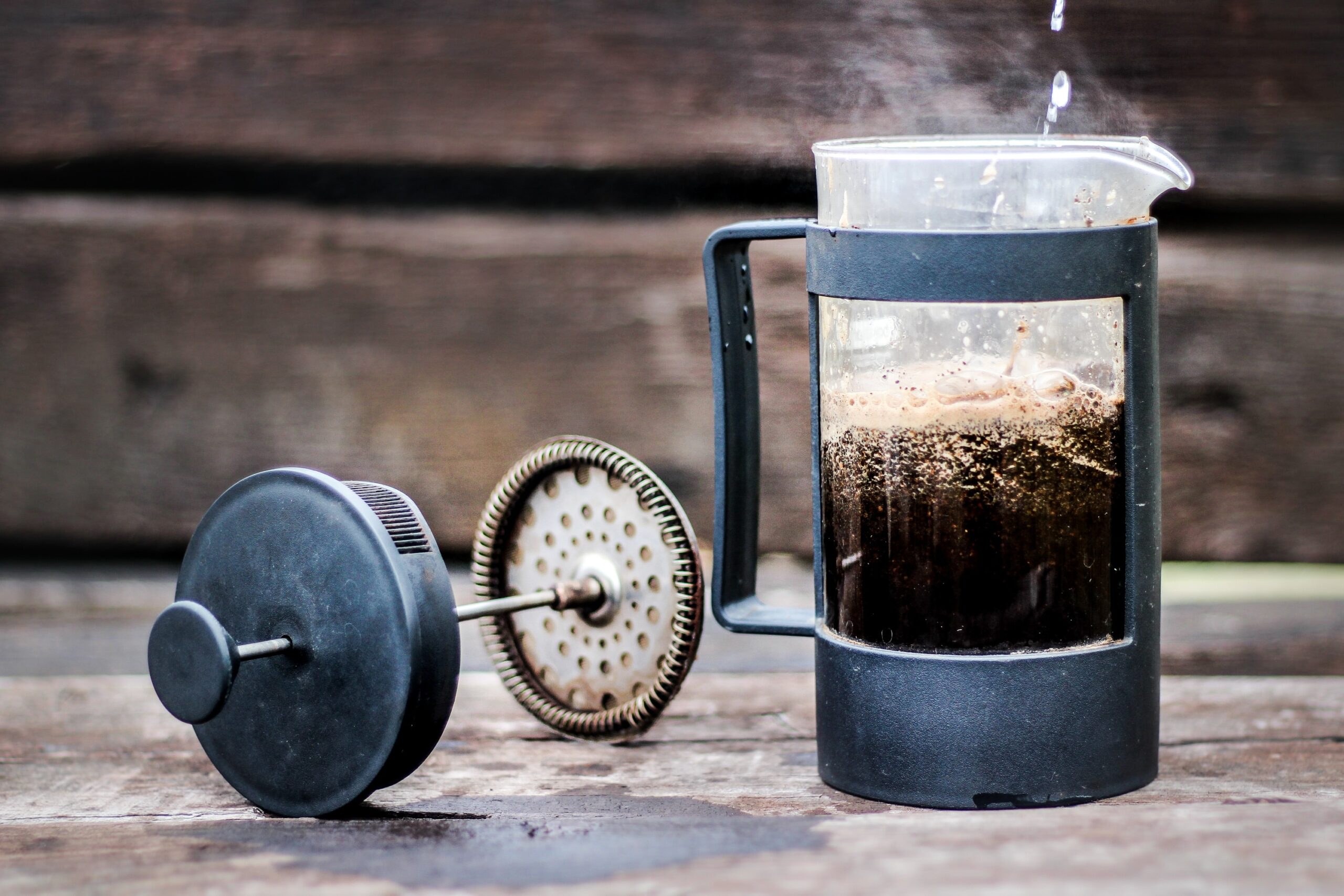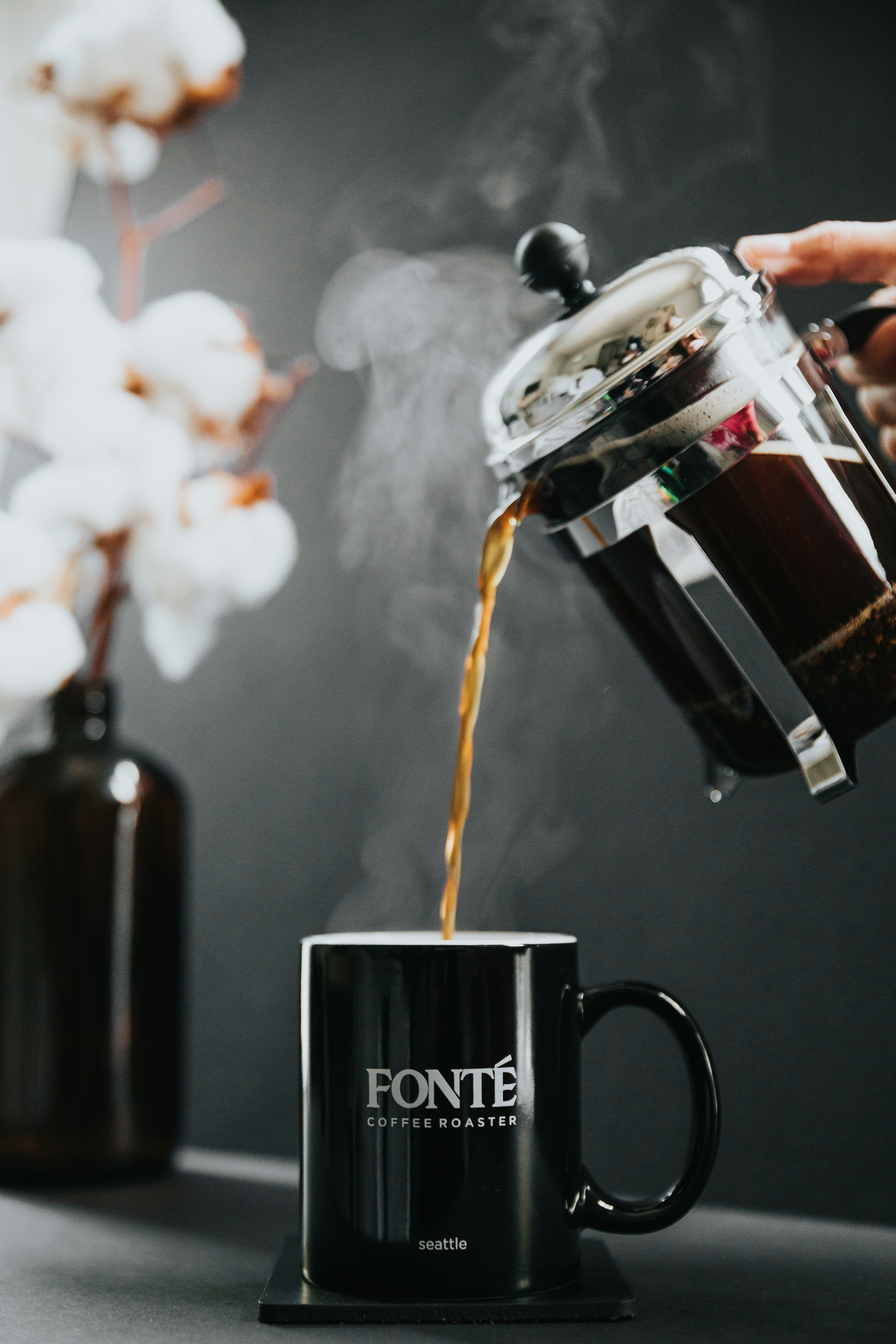How To Make French Press Coffee
If you’ve ever dreamed of transforming your kitchen into a charming French café, your moment has come! The magic begins with learning how to make enticingly rich French press coffee. This article will guide you through each step of the process, ensuring your mug overflows with warmth and aromatic delight. From understanding the perfect bean to grind ratio, to precisely letting your brew steep, this journey promises to unlock the aromatic mystery of this beloved brewing method, enabling you to master the art of making French press coffee in no time!

This image is property of images.unsplash.com.
Understanding the Basics of French Press Coffee
Before diving into the practical aspects of making French Press coffee, it’s important to understand why this method has such a dedicated following among coffee lovers and connoisseurs. The process is revered not only for its simplicity and convenience but also for its consistency and capacity to bring out the nuanced flavors and aromas within the coffee beans.
The History of French Press Coffee
Believe it or not, the French Press wasn’t invented in France—it was first patented in Italy in 1929. It was only when a French company refined and started producing it in the 1950s that it got its brand name ‘French Press’. This contributes to the universal appeal since it represents a melding of great European coffee traditions.
Why Choose French Press Over Other Brewing Methods
One of the main reasons why coffee enthusiasts choose the French Press is because of the full control it gives them over the brewing process. You decide on the steep time, the water temperature, and even the coarseness of the grounds. This allows you to extract the most flavors from your coffee beans, resulting in a robust and full-bodied cup.
Components of a French Press
A French Press consists of a beaker (usually made of glass or stainless steel), a mesh filter, and a plunger. It’s this simple design that makes it so easy to use. The beaker is where you place your coffee grounds and hot water, the filter separates the brewed coffee from the grounds, and the plunger is used to press down the filter and thereby complete the brewing process.
Selecting Your Coffee Beans
Choosing the right coffee beans is an integral part of the French Press coffee experience. Everyone has different preferences, and what works for one person may not work for another.
Understanding Coffee Bean Varieties
There are several varieties of coffee beans to choose from, each with unique flavors, aromas, and characteristics. Key ones include Arabica, Robusta, Liberica, and Excelsa. Arabica, known for its smooth and acidic flavor, is the most popular, closely followed by Robusta, known for its strong and bitter taste.
The Importance of Fresh Beans
Freshness is vital when it comes to French Press coffee. Beans that are freshly roasted and ground will amplify the flavor profiles, leading to a much richer cup of coffee. As a rule of thumb, beans should ideally be consumed within a month of being roasted.
Where to Purchase Quality Beans
One can purchase quality coffee beans from a variety of sources. Many prefer to buy from local roasters while others prefer online retailers. Either way, the key idea is to find a source that ensures the beans’ freshness and quality.
Grinding Your Coffee Beans
The grind is a vital part of the French Press process. The grind size impacts the extraction process, which directly affects the flavor and body of your coffee.
Why Grind Your Own Beans
Grinding your own beans allows you to control the grind size and ensures that you’re getting the freshest possible coffee. Pre-ground coffee, while convenient, may not offer the freshness or coarseness needed for the best French Press coffee.
Choosing the Proper Grind Size for French Press
For French Press coffee, it’s best to use a coarse grind, similar to the texture of sea salt. If the grind is too fine, it can slip through the mesh filter and make your coffee cloudy and gritty.
Best Coffee Grinders for French Press
When it comes to grinders, burr grinders are typically preferred over blade grinders. They provide a consistent grind size and allow you to adjust the fineness based on your preference.
Perfecting Your Water-to-Coffee Ratio
The correct ratio of water to coffee is crucial to achieving the perfect cup of French Press coffee.
How to Measure Coffee for French Press
A standard ratio is one ounce of coffee to 15 ounces of water. However, this ratio can be adjusted according to personal preference. Using a kitchen scale for accurate measurement of coffee can drastically improve the consistent taste of your brew.
How to Measure Water for French Press
When measuring water for your French Press, always consider the size of your French Press. A typical rule of thumb is filling the beaker up to the corresponding level mark.
Determining Your Preferred Strength
Determining the strength of your coffee is largely based on personal taste. You can adjust the water-to-coffee ratio accordingly and experiment until you find the perfect balance.

This image is property of images.unsplash.com.
Choosing the Right Water
Like the coffee beans and the grind, the quality and temperature of the water used can significantly affect the overall taste of the coffee.
The Importance of Using Quality Water
Choosing the right water for brewing can greatly enhance your coffee’s flavor. Filtered or bottled water is typically preferred over tap water as it usually contains fewer impurities.
Best Water Temperature for French Press
The ideal water temperature for French Press coffee is between 195°F and 205°F. If the water is too hot, it can over-extract the coffee, resulting in a bitter taste.
Hot vs. Boiling Water
Using boiling water for French Press coffee is a common mistake; the high temperature can over-extract the coffee and make it bitter. Instead, bring your water to a boil and then let it cool for a minute before using it to brew.
Brewing Your French Press Coffee
Now that we’ve covered selecting the beans, grinding them, the right water-to-coffee ratio, and the type of water to use, it’s time to get to the heart of the matter: brewing the coffee.
Prep and Preheat Your French Press
Before adding your coffee grounds and water, it’s a good idea to warm up your French Press with some hot water. This helps to maintain a consistent brewing temperature and also avoids temperature shock to the glass beaker.
How Long to Steep Your Coffee
The standard steep time for French Press coffee is four minutes. However, this can be adjusted according to taste. A longer steep time can result in a stronger, more robust flavor, while a shorter steep time can result in a milder taste.
Proper Stirring Techniques
Once you’ve added your hot water to the French Press, gently stir it to ensure all of the coffee grounds are fully immersed. This helps with even extraction and contributes to an overall better flavor.
This image is property of images.unsplash.com.
Pouring and Serving Your Coffee
Brewing is only half the journey. Serving your coffee correctly can contribute to your overall French Press coffee experience.
The Correct Way to Plunge Your French Press
After the steep time has elapsed, it’s time to press down the plunger. Do so slowly and steadily to prevent any grounds from escaping into your brew.
Hints for Clean Pouring
To pour coffee from your French Press cleanly, aim the spout towards the center of your cup. This will help limit any splashing and keep your coffee hot for longer.
Serving Temperature and Tips
Serving temperature can significantly affect how we perceive the flavors in coffee. Serving your French Press coffee between 155°F and 175°F can preserve the flavors and aromas but, of course, this depends on personal preference.
Cleaning Your French Press
Keeping your French Press clean is crucial to maintaining its longevity and ensuring great-tasting coffee every time.
Why Regular Cleaning is Vital
Regular cleaning ensures that there aren’t any residual coffee grounds or oils that could negatively impact the flavor of your future brews. It also helps in maintaining the French Press’s overall condition.
Step-by-Step Cleaning Procedure
To clean your French press, disassemble it fully and rinse each part under warm water. Use a soft brush or sponge to gently scrub the pieces. Avoid using harsh detergents; hot water is usually sufficient.
Maintaining Your French Press
Proper maintenance includes cleaning after use and storing in a safe and clean place. Moreover, routine check-ups on the condition of the filter-screen and replacing it when necessary can prolong the lifespan of your French Press.
Mistakes to Avoid While Making French Press Coffee
While making French Press coffee is a straightforward process, there are a few common mistakes that could potentially hinder your brewing experience.
Using the Wrong Grind Size
Using too fine a grind in a French Press coffee can over-extract the coffee and make it bitter. It can also escape from the screen filter, leading to a sludgy cup of coffee.
Incorrect Water Temperature
Water that’s too hot can burn the beans and make your coffee bitter, while water that’s not hot enough could under-extract it and make it too weak.
Over-Extraction and Under-Extraction
Over-extraction occurs when the coffee is steeped for too long or the water is too hot, leading to a bitter taste. Under-extraction occurs when the coffee isn’t steeped long enough or the water isn’t hot enough, leading to a weak or sour coffee.
Experimenting with French Press Coffee
Once you’ve mastered the basic steps to making French Press coffee, you can experiment with various techniques, ingredients, and flavors.
Exploring Different Coffee Varieties
The world of coffee is incredibly diverse. Trying different varieties of beans can offer a range of flavors and aromas to explore.
Trying Different Brew Times
Altering the brew time slightly can have a significant impact on the strength and flavor of the coffee. Experimenting with different times allows you to find your perfect brew.
Adding Additional Flavors and Spices
Adding spices or flavors like cinnamon, nutmeg, or even a hint of vanilla can make your French Press coffee experience more enjoyable and unique. Just make sure not to overwhelm the natural flavors of the coffee beans.
In conclusion, brewing coffee using a French Press is a straightforward process that allows for a lot of creativity and control. By understanding the basics and avoiding common mistakes, you can enhance your coffee brewing experience and enjoy a delicious cup of coffee exactly to your liking. Cheers to your next brew!







